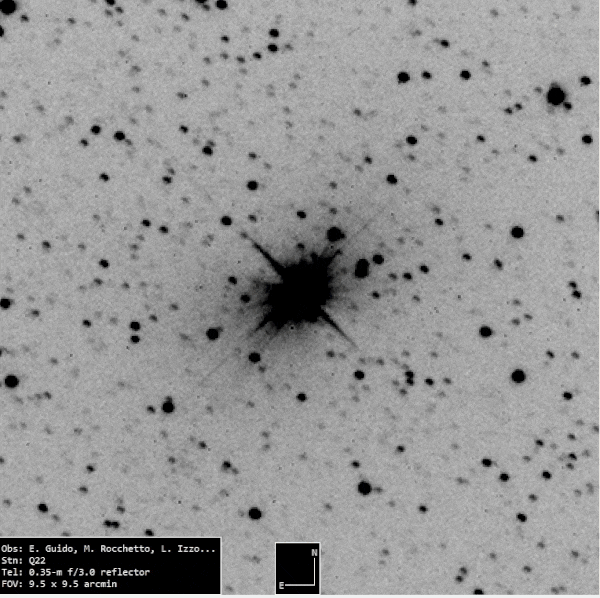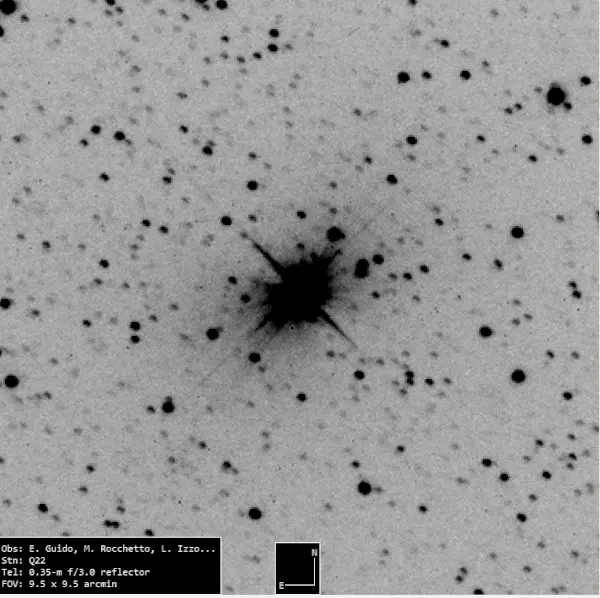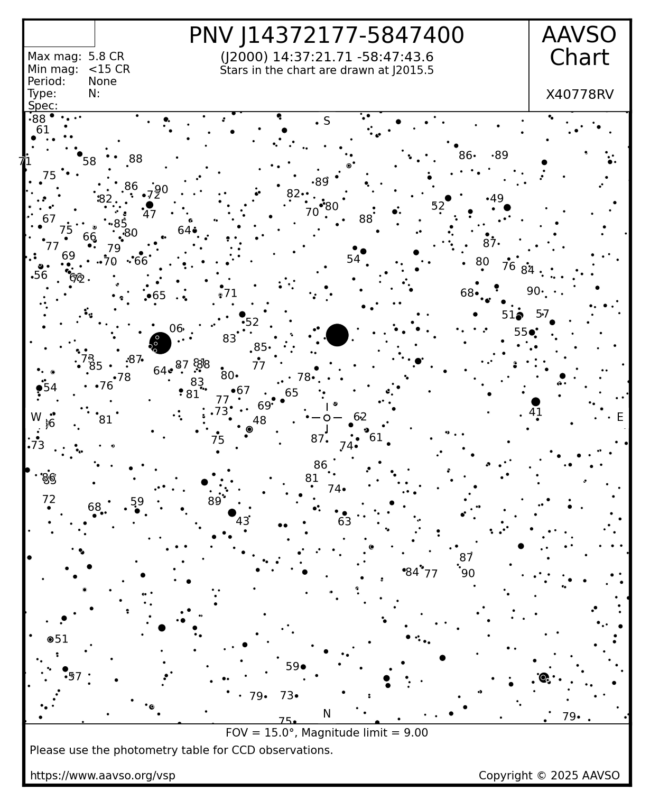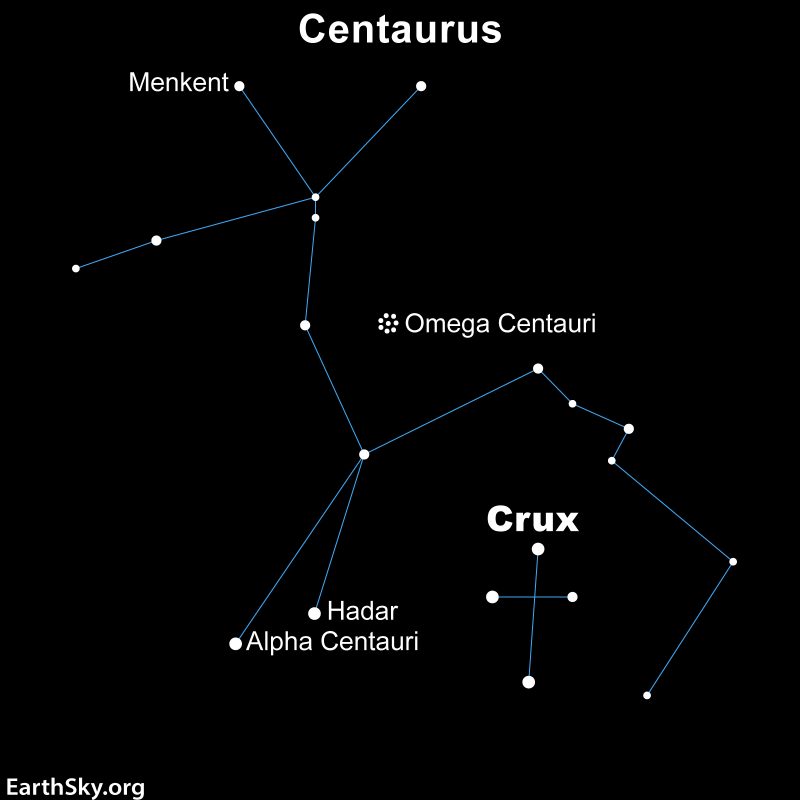

New nova might be visible to the unaided eye
In an “observing alerts” forum of the American Association of Variable Star Observers (AAVSO), observers on September 22, 2025, reported a possible new nova – a star where no star appeared before – in the direction of the southern constellation Centaurus. The nova was reported as magnitude 6, or just on the edge of visibility to the eye. So it might be just in reach of the unaided eye from a dark-sky site.
The observer report at the AAVSO website says that John Seach discovered this nova.
The coordinates of the suspected nova are RA = 14 37 21.77 Dec = -58 47 40.0. This location on the sky is quite close to the famous star Alpha Centauri, closest star system to our sun at 4.3 light-years. This does not mean, of course, that the nova is connected to Alpha Centauri in any way, or that it’s close to our neighborhood of space. We don’t yet know how far away it lies. It just means the nova is in the same direction of sky as Alpha Centauri.
The constellation Centaurus the Centaur lies in Southern Hemisphere skies. It sits so far south that if you live above 25 degrees north latitude, you won’t be able to see it.


More info on the nova
The nova was only very recently discovered, so information and images are still sparse. Starting on September 22, 2025, the Central Bureau for Astronomical Telegrams had a few reports of the nova, too. The first reads:
Possible new nova in Centaurus. Discovered by John Seach, Grafton, NSW, Australia. Object visible on 3 images taken with DSLR with 40 mm f/1.4 lens. No object identified at position on 3 images taken with same instrument on September 21. 3660 UT, limiting magnitude 11.0. No minor planet at position …
Another report reads:
A low-resolution optical spectrum shows strong broad hydrogen Balmer emissions, indicative of a classical nova. Observer Rob Kaufman, Bright, Victoria, Australia.
The current name for this transient object is PNV J14372177-5847400.
??????????????PNV J14372177-5847400cbat.eps.harvard.edu/unconf/follo…6.2???????????????????????????????????????
— ?????????????? (@localgroupjp.bsky.social) 2025-09-23T01:16:24.714Z
What exactly is a nova?
A nova always involves two closely-orbiting stars. One is a tiny, dense white dwarf about the size of Earth. And the companion star may be similar in mass to our sun. The white dwarf’s powerful gravity siphons material (mostly hydrogen) away from its companion over thousands of years. The hot gas forms a disk around the dwarf, which funnels the material down to the star’s surface. In time, the pilfered gas is compacted and heated until it ignites in a massive thermonuclear blast a million times brighter than the light of both stars combined.
To our eyes the explosion looks like a brand-new star in the night sky. Previously, the pair was there for a long, long time, but too faint to call attention to itself.
Good news … The dwarf typically survives the blast and begins anew to gather more hydrogen for the next eruption. When you know what’s behind that single pinpoint of light, it’s a marvel!

Bottom line: It appears there’s a new nova – or guest star – in the southern constellation of Centaurus. The nova could be visible with your eyes alone from a dark-sky site.
Centaurus the Centaur is home to some nearby stars
A nova or ‘new star’ in Lupus: Photos from our community
Source link

